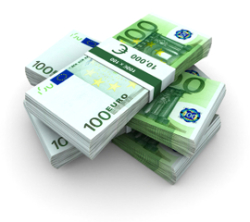The paper mills would like to see an increase in the range of 3% to 4% in the third quarter, especially the mills that produce coated paper, according to Paul Buohl, manager of estimating and purchasing for direct marketing production consulting firm EU Services. But he doesn’t think it will actually happen until the fourth quarter.
Buohl believes more printers and merchants have a higher inventory level than in the last quarter because of the recent paper increases. “Both merchants and printers generally will buy a little extra paper before the increase hits,” he notes.
For most mills, there have been two price increases, says Dan Walsh, vice president of catalog/publication papers at distributor Bradner Smith & Co.: one for $1.50/hundredweight, which took effect in April, and another for $3/cwt, which took effect in June. But many larger catalogers had negotiated price caps, which protected them from any increases until July 1 shipments, Walsh says.
“Paper manufacturers are trying to lay the groundwork for another price increase this summer,” he says. “If this does happen, I would expect the increase to be in the $2/cwt range.” In any year, the most opportune time for mills to propose a price increase is the summer, as retailers and catalogers are planning their holiday season.
Dave Goldschmidt, vice president of marketing, catalog division for paper brokerage Strategic Paper Group, suspects the mills will announce another price increase near the start of the third quarter. That’s if the operating rates remain high through summer, which they most likely will because of the cyclically busy time of year.
For a price hike to stick, there needs to be a more significant demand increase and/or further mill supply reductions, Goldschmidt says, “which could certainly happen.”
Goldschmidt sees increased exports and decreased imports. “We also believe there is some inventory buildup and prebuys taking place to try to beat mill announced price increases,” he explains. Couple those with recent capacity reductions from paper producers Domtar and Kruger, “and what we see is a tighter marketplace and higher mill operating rates.”
Year-over-year gains in paper shipments are “a bit misleading,” Goldschmidt adds. “We have not seen a major uptick in demand from our clients. True demand indicators are showing negative numbers right now.”
Consumption creeping up
But multichannel merchants seem more optimistic about current sales and the upcoming holiday season, Walsh says. “This optimism is translating into catalogers increasing their circulations by prospecting more, by mailing to more people on their lists and raising their breadth of product offerings through increased page counts.”
That means more paper consumption. Then again, Walsh says the increased numbers are compared to last year, which for many was the worst retail period in decades. “It’s great to see the numbers up, but we should all understand that it’s up against the yardstick of a very dismal period.”
And even though catalogers are increasing page counts and circulation, they may not rebound to previous paper consumption levels anytime soon. Most merchants realize print drives the buyer to their Websites, Walsh says, “but many catalogers are using single card mailings to drive the traffic as opposed to a full catalog.”
Eye on THE EURO

THE PAPER SUPPLY FROM OUTSIDE NORTH AMERICA could increase if the Euro continues its downward slope. As the Euro weakens, it makes the U.S. market a prime target for European paper producers, says Dan Walsh, vice president of catalog/publication papers at distributor Bradner Smith & Co.
“North American paper manufacturers should be concerned if the dollar continues its upward push because significant European imports will drive down the price of paper,” Walsh adds.
That could be good for U.S. catalogers, though demand remains low and mills here are keeping supply low. “A firm paper market could still result if North American mills continue to reduce supply and the Europeans stay at home,” Walsh says. — JT